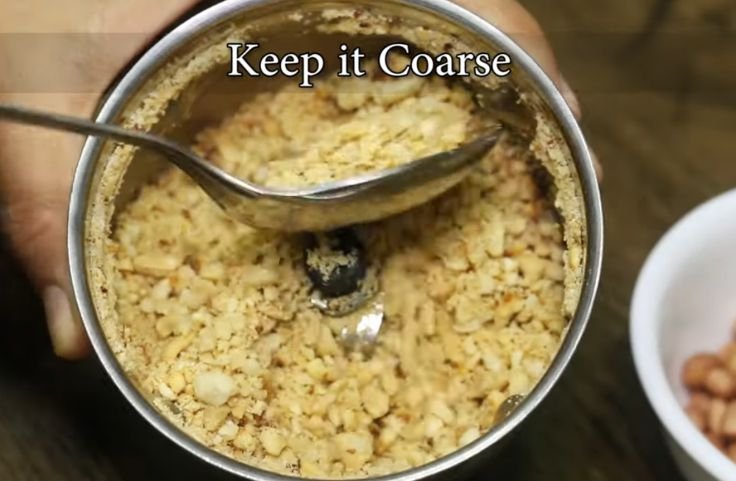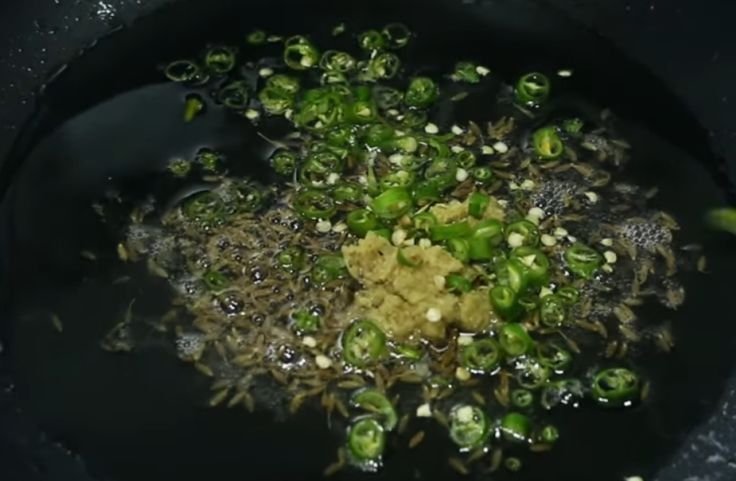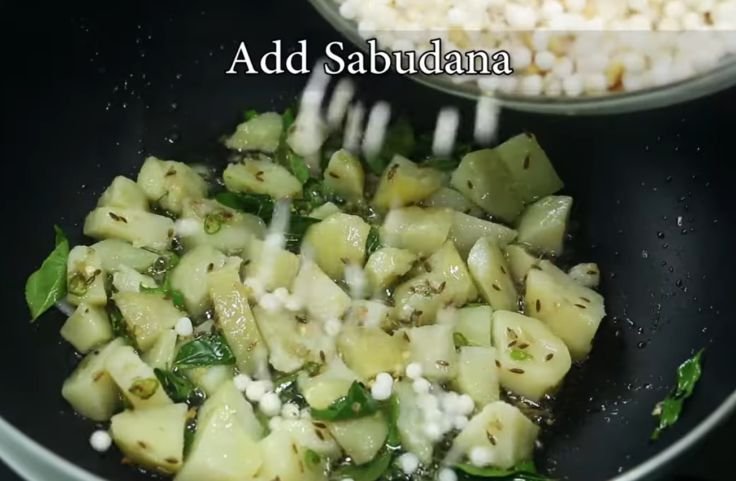Sabudana khichdi is a light, flavorful dish made with tapioca pearls, peanuts, and spices, perfect for fasting days or a quick, comforting meal anytime you crave something wholesome.
When you prepare sabudana khichdi, you are making a dish that blends comfort, tradition, and nutrition in one bowl.
You start with sabudana, or tapioca pearls, soaking them until soft and translucent.
Then you cook them gently with roasted peanuts, cumin, and green chilies, sometimes adding vegetables for color and texture.
This dish is a common choice during fasting days in India, but you can enjoy it anytime as a light meal or snack.
The soft pearls, nutty crunch, and mild spice make every bite satisfying.
While it cooks quickly, its taste lingers, reminding you of home-cooked meals.
Knowing its calorie count helps you fit it into your diet without guilt. With the right preparation, sabudana khichdi can be both flavorful and balanced, keeping you full and energized.
Related: Tapioca Sabudana: A Staple Ingredient in Indian Fasting
Table of Contents
- What is Sabudana Khichdi?
- What is Sabudana Khichdi Made Of?
- Caloric Breakdown of Sabudana Khichdi
- Is Sabudana Khichdi Healthy?
- How to Make Sabudana Khichdi
- Sabudana Khichdi for Weight Watchers
- Conclusion
- Frequently Asked Questions
What is Sabudana Khichdi?
Sabudana Khichdi is a popular Indian dish made primarily with soaked sabudana (tapioca pearls), cooked with roasted peanuts, boiled potatoes, mild spices, and fresh herbs.
It is light, gluten-free, and often enjoyed during Hindu fasting periods like Navratri because it provides energy without using grains.
The pearls turn soft and slightly chewy when cooked, while the peanuts add crunch and flavor.
Typically seasoned with cumin seeds, green chilies, and a squeeze of lemon juice, Sabudana Khichdi is both nourishing and flavorful.
Related Posts
Are Tapioca Pearls Gluten Free?
How to Make Sabudana Thalipeeth
Tapioca Puffs: Light, Crispy Bites Made from Cassava Starch
Cassava Crackers: Crunchy Goodness from the Whole Root
What is Sabudana Khichdi Made Of?
Sabudana khichdi brings together a handful of simple ingredients that turn into a filling and flavorful dish. Each component adds its texture, taste, and nutritional value.
Sabudana (Tapioca Pearls)
The star of the dish, sabudana, gives khichdi its signature chewy texture. Use medium-sized pearls and soak them for 4–6 hours until soft.
Proper soaking ensures they remain separate, not sticky, while cooking. Always rinse well to remove excess starch before use.
Potatoes
Potatoes add body, earthiness, and a satisfying bite to sabudana khichdi. Cut them into small cubes for even cooking.
Pan-fry lightly before adding to enhance flavor and prevent them from turning mushy.
They also make the dish more filling during fasting.
Roasted Peanuts
Roasted peanuts bring crunch, nuttiness, and protein to the dish. Coarsely grind them to coat the sabudana lightly, adding depth and preventing clumping.
For a richer taste, roast at home instead of using store-bought, and remove skins for a smoother texture.
Green Chilies
Green chilies add heat and a refreshing zing to balance the mild sabudana. Adjust quantity to your spice preference.
Slit them for subtle heat or finely chop for more intense spiciness. Always sauté with potatoes for better flavor infusion and aroma.
Curry Leaves
Curry leaves infuse a distinct, savory aroma into sabudana khichdi. Add them early while tempering for maximum flavor release.
Fresh leaves work best, but dried ones can be used if unavailable.
They also improve digestion and complement the peanuts’ nuttiness beautifully.
Ghee or Oil
Ghee enhances richness and gives khichdi a smooth mouthfeel, making it more aromatic.
Use ghee for a traditional flavor, or oil for a lighter alternative.
Heat it well before tempering to bring out the best in spices, curry leaves, and chilies.
Cumin Seeds
Cumin seeds add a warm, earthy fragrance and aid digestion. Roast them in hot ghee or oil until aromatic but not burnt.
Their nutty undertones pair perfectly with potatoes, peanuts, and sabudana, giving the dish an authentic and well-rounded taste.
Salt
Salt balances all the flavors and brings out the subtle notes of each ingredient.
If making sabudana khichdi for fasting (vrat), use sendha namak (rock salt) instead of regular salt, as it aligns with traditional fasting practices in many Indian households.
Lemon Juice
Lemon juice adds a bright, tangy finish that lifts the flavors and prevents heaviness.
Always squeeze fresh lemon over the khichdi after turning off the heat to retain its zing. It also helps cut through the ghee or oil richness.
Related: How to Make the Perfect Sabudana Vada
Caloric Breakdown of Sabudana Khichdi
A cup of sabudana khichdi, about 150 to 200 grams, contains roughly 250 to 350 calories, depending on ingredients.
Sabudana itself contributes 180 to 210 calories per serving, coming mainly from carbohydrates that provide quick energy during fasting.
Roasted peanuts add 100 to 110 calories along with protein, healthy fats, and crunch.
A small potato of around 50 grams gives 40 to 50 calories, adding creaminess and extra carbs.
Cooking fat plays a big role in the total: one tablespoon of ghee adds about 120 calories, while oil adds around 100.
These fats help distribute spices evenly and prevent sticking.
The final calorie count depends on portion size and preparation choices, but the dish remains a satisfying, energy-rich option for fasting or light meals.
Balancing ingredients can make it both flavorful and aligned with your dietary goals.
Is Sabudana Khichdi Healthy?
Sabudana khichdi is rich in carbohydrates from tapioca pearls, making it a quick source of energy, especially during fasting.
Cooking oil or ghee adds moderate fat, improving flavor and texture, but the dish is low in protein, which may not suit those with higher protein needs.
Being gluten-free, it works well for people with celiac disease or gluten sensitivity.
Adding vegetables and spices can improve its taste and nutrient profile.
However, its low fiber content can affect digestion and satiety, and its high glycemic index may cause rapid spikes in blood sugar, which is a concern for those managing diabetes.
For a healthier balance, pair sabudana khichdi with foods rich in protein and fiber.
This helps improve digestion, maintain energy for longer, and make the meal more balanced while keeping its traditional flavor intact.
How to Make Sabudana Khichdi
Follow these simple steps so you can make soft, fluffy sabudana khichdi with a nutty crunch and fresh flavor.
Each step keeps the texture steady and makes the dish taste brighter today.
Step 1: Soak the sabudana

Rinse sabudana under running water until it runs clear to remove loose starch.
Soak the pearls in just enough water to cover them for four to six hours or overnight in a cool place.
They should turn soft and plump without breaking down. Avoid over-soaking since that makes the mix gummy.
Properly soaked pearls cook evenly and keep your khichdi light, not sticky.
Step 2: Drain and test the pearls
Drain the soaked pearls in a sieve and press gently to remove extra water so they do not clump.
Test a few pearls by pressing between fingers; they should mash easily and have no hard white center.
If they feel wet, spread them on a clean cloth for ten to fifteen minutes and fluff with a fork.
Well-drained sabudana blends with other ingredients and cooks correctly.
Step 3: Roast and crush the peanuts

Roast raw peanuts in a dry pan on medium heat until they turn golden and smell nutty.
Let them cool completely so the steam does not soften the crunch.
Pulse or crush the peanuts coarsely so you keep small pieces for texture.
Roasted peanuts add protein and a rich nutty note that balances the pearls.
Set them aside while you prepare the potatoes and spices.
Step 4: Prep potatoes and spices

Boil potatoes until tender, peel and mash lightly so they bind without becoming pasty.
Finely chop green chilies and coriander, and measure out cumin seeds and rock salt. If you use curry leaves, keep them ready.
Having these items prepped prevents overcooking the sabudana later.
The potato mix gives body and helps the pearls cling to other flavors for an even mouthful.
Step 5: Temper the spices

Heat a non-stick pan on medium and add a teaspoon of ghee or oil.
When warm, add cumin seeds and let them sputter, then add green chilies and curry leaves if using.
Sauté briefly to release aroma, but do not burn the spices.
This tempering forms the flavor base and helps prevent the pearls from sticking when you add the sabudana and potato mix.
Step 6: Cook the potato and peanut base
Add the mashed potatoes and crushed peanuts to the pan and stir for two to three minutes until the raw smell of potatoes is gone and the spices blend through.
If you want more color and fiber, add diced capsicum or peas now.
Cooking this base first lets the pearls absorb flavor, so your khichdi tastes balanced rather than bland after you add the sabudana.
Step 7: Add sabudana and finish cooking

Lower the heat and add the drained sabudana pearls to the pan, mixing gently so they coat with the potato and peanut mix.
Cook on low to medium heat and stir often for three to five minutes until the pearls turn translucent and no chalky center remains.
If the mix looks dry, add a teaspoon of water and cover briefly to steam.
Taste and adjust salt before switching off the heat.
Step 8: Garnish and serve

Fold in chopped coriander and squeeze fresh lemon for brightness.
Serve your sabudana khichdi hot with plain yogurt or green chutney on the side.
Store leftovers in the fridge for up to twenty-four hours and reheat gently in a pan to keep the texture.
Pair with a simple salad or steamed greens to add fiber and make the meal more balanced.
Sabudana Khichdi for Weight Watchers
Sabudana khichdi can fit into your weight management plan when you prepare and eat it with intention.
By adjusting portion sizes, cooking methods, and side pairings, you can enjoy it without exceeding your calorie goals.
Keep Portions in Check
Limit yourself to about one cup of sabudana khichdi per serving. This helps you control calorie intake while still satisfying your cravings.
Using smaller plates can make the portion feel more filling.
Pair with Protein and Fiber
Balance the high carbohydrate content of sabudana by adding sides like yogurt, boiled lentils, or fresh salads.
These pairings improve satiety, keeping you full longer and supporting stable energy levels throughout the day.
Choose Lighter Cooking Methods
Reduce oil or ghee during cooking to lower the calorie count. Opt for non-stick pans, which require less fat, while still allowing the spices and peanuts to release their flavor.
Practice Mindful Eating
Eat slowly and without distractions to better recognize when you are full.
Savoring each bite can prevent overeating and help you enjoy the dish more while still sticking to your diet plan.
Add Vegetables for Balance
Incorporate vegetables like carrots, capsicum, or spinach to increase fiber and nutrients.
This makes the dish more filling while adding color and variety to your plate, supporting both taste and health goals.
Conclusion
Sabudana khichdi is more than a fasting recipe; it is a comfort food that blends soft tapioca pearls, the crunch of peanuts, and the aroma of gentle spices.
With simple preparation, you can turn everyday ingredients into a satisfying dish that works for both traditional and modern health goals.
Its quick energy makes it perfect for vrat days, yet with mindful portioning and the right sides, it also fits into weight-focused meal plans.
Adding vegetables or protein-rich foods can make it more balanced, while lighter cooking methods keep calories in check.
Whether served warm for breakfast or as an evening snack, sabudana khichdi remains a wholesome, flavorful choice worth savoring.
Frequently Asked Questions
How many calories are in 100g of sabudana khichdi?
There are approximately 150 to 180 calories in 100g of sabudana khichdi, depending on the amount of oil, potatoes, and peanuts used.
Is sabudana khichdi good for weight loss?
Sabudana khichdi is high in carbohydrates and calories, so it’s not ideal for weight loss unless portion-controlled and combined with protein-rich sides.
Can diabetics eat sabudana khichdi?
Sabudana has a high glycemic index, which can spike blood sugar. Diabetics should avoid or consume it sparingly with medical guidance.
How do I make sabudana khichdi healthier?
Use less oil, add more vegetables, reduce potatoes, and roast peanuts instead of frying. Serve with yogurt for better balance and added protein.
References

Chimeremeze Emeh is a writer and researcher passionate about Africa’s most transformative root crop—cassava. Through his work at cassavavaluechain.com, he explores the entire cassava industry, from cultivation and processing to its diverse applications in food, health, and industrial use.
He also writes for palmoilpalm.com, where he shares his extensive experience and deep-rooted knowledge of palm oil, covering red palm oil, palm kernel oil, and refined products. His work there reflects his lifelong connection to agriculture and his commitment to promoting sustainable value chains in Africa.
Driven by curiosity and purpose, Chimeremeze aims to shed light on how cassava continues to empower communities, strengthen food systems, and link traditional farming wisdom with modern innovation.

